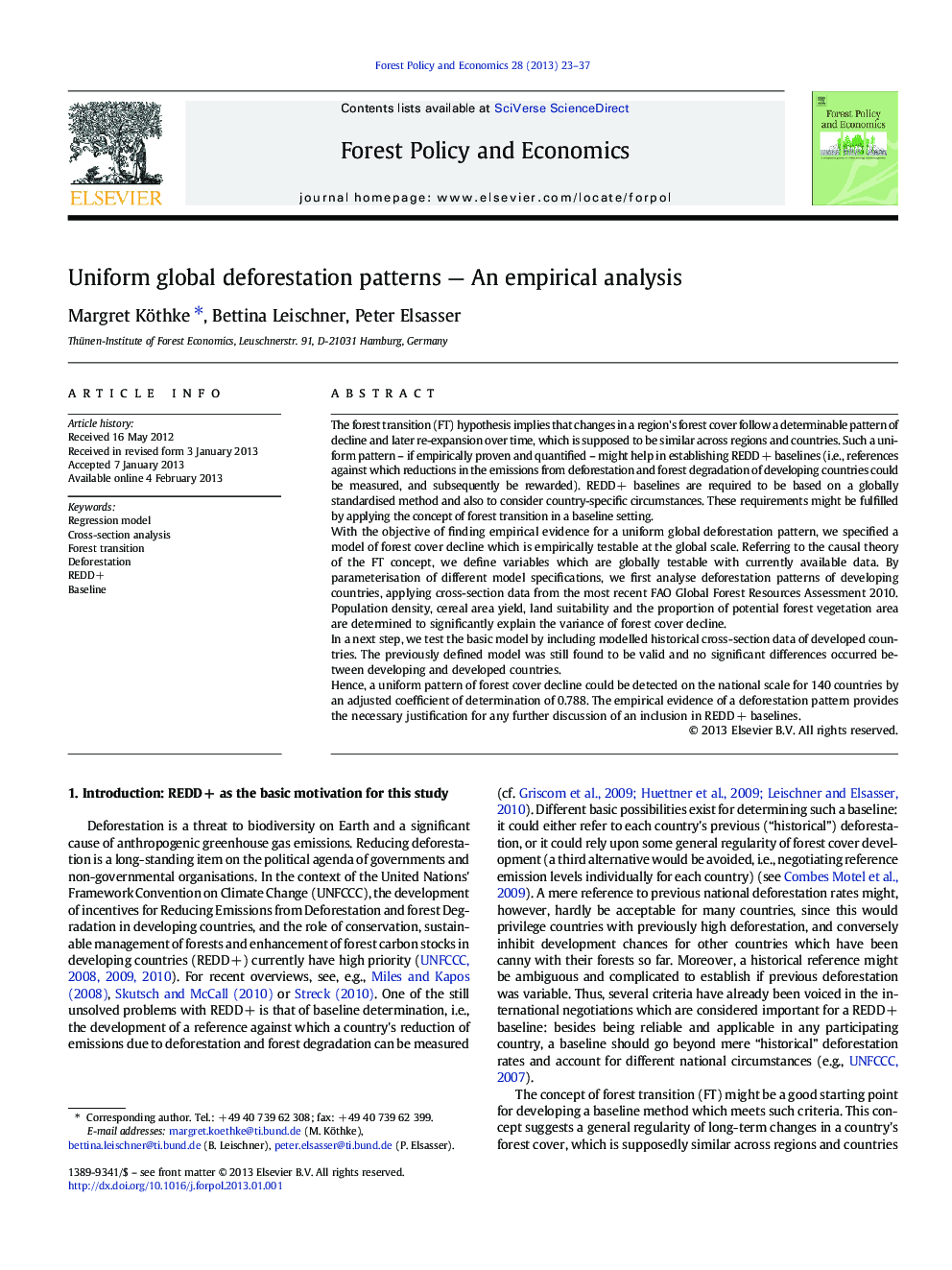| کد مقاله | کد نشریه | سال انتشار | مقاله انگلیسی | نسخه تمام متن |
|---|---|---|---|---|
| 92019 | 159894 | 2013 | 15 صفحه PDF | دانلود رایگان |

The forest transition (FT) hypothesis implies that changes in a region's forest cover follow a determinable pattern of decline and later re-expansion over time, which is supposed to be similar across regions and countries. Such a uniform pattern – if empirically proven and quantified – might help in establishing REDD + baselines (i.e., references against which reductions in the emissions from deforestation and forest degradation of developing countries could be measured, and subsequently be rewarded). REDD + baselines are required to be based on a globally standardised method and also to consider country-specific circumstances. These requirements might be fulfilled by applying the concept of forest transition in a baseline setting.With the objective of finding empirical evidence for a uniform global deforestation pattern, we specified a model of forest cover decline which is empirically testable at the global scale. Referring to the causal theory of the FT concept, we define variables which are globally testable with currently available data. By parameterisation of different model specifications, we first analyse deforestation patterns of developing countries, applying cross-section data from the most recent FAO Global Forest Resources Assessment 2010. Population density, cereal area yield, land suitability and the proportion of potential forest vegetation area are determined to significantly explain the variance of forest cover decline.In a next step, we test the basic model by including modelled historical cross-section data of developed countries. The previously defined model was still found to be valid and no significant differences occurred between developing and developed countries.Hence, a uniform pattern of forest cover decline could be detected on the national scale for 140 countries by an adjusted coefficient of determination of 0.788. The empirical evidence of a deforestation pattern provides the necessary justification for any further discussion of an inclusion in REDD + baselines.
► A uniform pattern of forest cover decline for developing countries could be detected.
► Population density has a significant influence on the forest cover development.
► No significant difference between developing and developed countries exists.
Journal: Forest Policy and Economics - Volume 28, March 2013, Pages 23–37